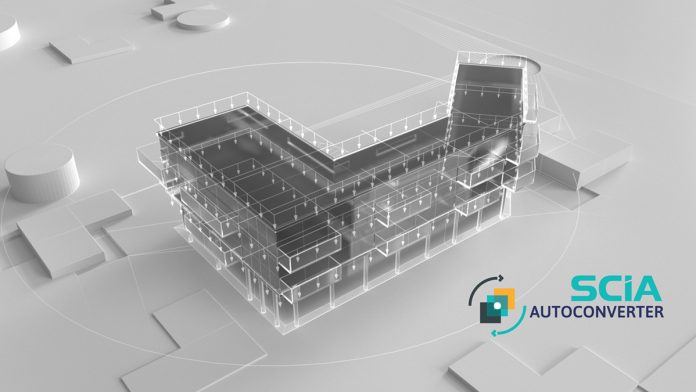Viktor Várkonyi, chief division officer and Nigel Rees, project lead at the Nemetschek Group, are challenging the status quo, explaining what the future holds for BIM and structural engineering
Despite the various AEC software solutions that industry giants like the Nemetschek Group – and its 16 brands – and other companies have developed over the last few decades, the construction industry is still considered to be one of the least digitalised industries overall. There is a lot to be learned by looking at automation techniques from other industries, such as the automotive and manufacturing sectors.
As modern buildings have become increasingly complex and processes increasingly more data-driven, we see the number of stakeholders involved along the value chain of construction projects growing proportionally. This means that handover phases – which traditionally carry the highest risk of losing data due to inefficiencies or incompatible software – increase in number, thereby making the seamless usage of data and ease of collaboration even more important.
Based on your vast project experience with 16 brands operating all around the globe, what do you think is critical for improving collaboration among the various stakeholders involved in a project?
Várkonyi: “For us, two things are of the utmost importance. Firstly, we are passionate ambassadors of open standards. Since our company was founded in the 1960s, we have been preaching the importance of open standards for the liberated usage of data. This is not just for architects and engineers, but for data usage across the whole lifecycle – from planning to operation.
“And secondly, our brand teams all share the same Nemetschek DNA: they value working closely with their clients to understand their specific needs. This also creates a tremendous amount of inspiration internally for breakthrough innovations. Understanding the synergies between our brands and products is crucial to helping our clients improve and facilitate their everyday work. SCIA AutoConverter is a great example of this.”
We assume your development team have plenty of ideas about which processes and workflows could be improved. How do you determine which workflows to focus on?
Rees: “Client-centricity is the key here again. For instance, a particular challenge structural engineers face is that exchanging data between different modelling tools and structural software packages can be difficult or incomplete. Information can be lost, forcing engineers to recreate different stages of the project and wasting time redoing work.
“A 2019 survey by the Institution of Civil Engineers shows that over 50% of engineering professionals are frustrated by receiving incomplete design data from other disciplines, and 40% of those professionals are concerned by the risk of exchanging structural data between teams. But in addition to official surveys, where we learn the most is from the conversations we have with our clients.
“They told us that they needed a more reliable process that maintains the model integrity and associated data throughout in order to increase flexibility for design teams, making the process easier and more productive. In doing this, we ensure we reduce the introduction of manual workarounds, which are designed to overcome the current shortcomings but often just add complications.
“These client conversations point us towards those workflows that urgently need improvement and can create a huge benefit to the industry as a whole. Once identified, it is up to us to utilise the synergies within our group and come up with workable solutions that solve our clients’ problems.”
The theory sounds great, but how exactly are you solving those issues – for example, with the structural engineering workflow?
Várkonyi: “Our brand teams at SCIA and Allplan worked on a solution specifically targeted at the workflow between architects and structural engineers. SCIA developed a solution called SCIA AutoConverter, which perfects the traditional reference model workflow. This means that the structural engineer and the architect are working on separate models, but they share a reference model with each other which is synchronised in a federated model environment.
“Typically, structural engineers are often forced to recreate their analysis model from scratch. Some do it at every iteration, frequently losing valuable time to repetitive – and often mundane – tasks. To address this, SCIA AutoConverter was designed to automatically create the analysis model using data from the centrally managed federated model. It also supports many different 3D design and structural design solutions.
“Throughout this process, the engineer keeps control over how the analysis model is created. I cannot stress enough how important this capability is for many engineers. With the current process, often up to 30% of the schedule is used to build models and keep them synchronised between the design teams. SCIA AutoConverter helps save this valuable time. In addition, the workflow is built on the cloud-based Allplan Bimplus platform, which has powerful change management features and other benefits.”
Rees: “Exactly. With project teams being located across different offices or even countries, being able to quickly and easily share and access data at any time, in a managed way, is an absolute necessity. Using the Bimplus cloud technology and Open BIM, 3D models from a range of disciplines and programs can be brought together to create a unified, federated model and then exported to structural analysis solutions, all without losing data.
“Similarly, models can be imported back after structural analysis is complete and then integrated into the federated model with all data intact and enhanced where appropriate. Structural engineering thus becomes integrated within the BIM design workflow, rather than sitting outside the process. Not only does this provide a more efficient and cohesive way of working together by reducing manual rework and errors, it ensures that the workflow is controlled, information is retained and risk is managed.”
SCIA AutoConverter is not a prototype; the product is already available, correct?
Rees: “Yes, SCIA AutoConverter is available directly from SCIA. In addition, we are very excited to bring the model conversion capabilities of this game-changing solution to Allplan in Allplan 2021. With this innovation, supported engineering clients will gain the ability to integrate Allplan models quickly and efficiently to their structural analysis tool of choice, including sister brands SCIA, Frilo and Risa, as well as other structural analysis tools using Open BIM.”
Alexander Siegmund
Manager Corporate Communication & PR
Tel: +49 89 540 459 255
Please note: this is a commercial profile.














